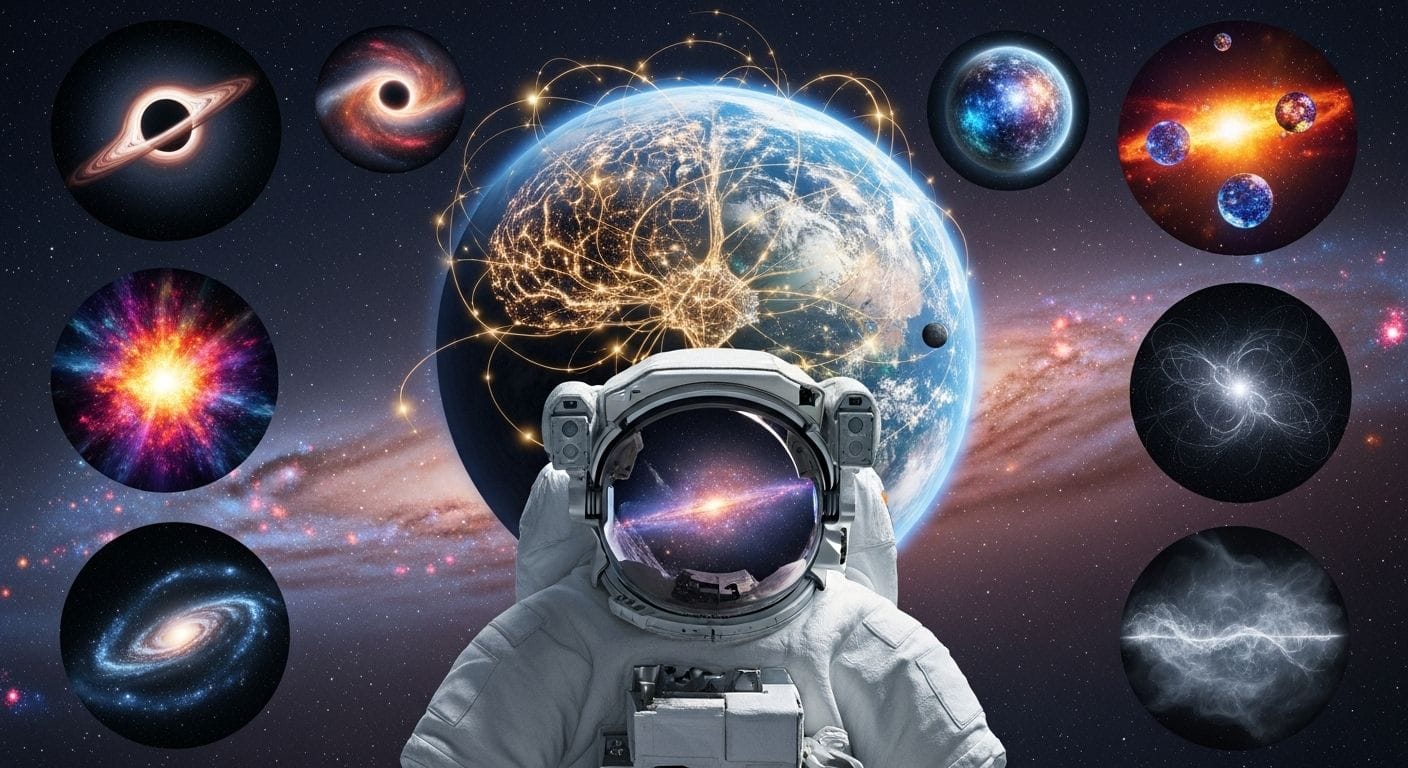7 Mind-Bending Space Facts That’ll Rewire Your Perspective of Earth
BY SARAH CHEN • PUBLISHED NOVEMBER 26, 2025 • 6 MIN READ

QUICK TAKE
Feeling stuck in daily routines? These verified space facts—from our stardust origins to Earth's cosmic speeds—offer a reality check that puts life's challenges in perspective. We've fact-checked every claim with scientific sources.
Ever feel like you're stuck in a rut, worried about the small stuff? Sometimes all we need is a cosmic reality check. These space facts won't just blow your mind—they'll completely shift how you see our little blue marble.
1. You're Literally Made of Stardust (No, Really)
Every atom in your body heavier than hydrogen was forged in the nuclear furnace of dying stars billions of years ago through a process called nucleosynthesis. That calcium in your bones and iron in your blood were created inside stars, and many elements came through several supernovas.
📚 Source
Natural History Museum, "Are we made of stardust?"; Space.com study of 150,000 stars (2017) finding humans and the Milky Way share 97% of the same atoms
You're not just on Earth—you're recycled star material that became conscious enough to wonder about its own origins.
2. Earth is Smoother Than You Think
If you shrunk Earth to the size of a billiard ball, it would be smoother than an actual billiard ball. Mount Everest, at 8.85 km high, and the Mariana Trench, at 11 km deep, would both fall within regulation smoothness standards for pool balls.
The World Pool-Billiard Association allows bumps up to 0.005 inches on a 2.25-inch ball. Scale that to Earth's size and you get about 28 kilometers—more than enough to accommodate our highest peaks and deepest trenches.
📚 Source
Discover Magazine (2008); ozgurnevres.com analysis (2024)
Now, some scientists note this is mathematical smoothness, not tactile smoothness. At billiard-ball size, you might still feel the mountains like fine sandpaper. But the point stands: those insurmountable peaks are barely scratches on a planetary scale.
3. You're Moving at Over 1 Million MPH
Earth spins at 1,037 mph at the equator. It orbits the Sun at 67,000 mph. Our solar system moves through the Milky Way at 448,000 mph. And our galaxy races toward Andromeda at 252,000 mph.
📚 Source
Space.com, "How fast is Earth moving?" (2025); StarDate Online
Add it all up and you're moving at well over a million miles per hour through space. Yet your coffee sits perfectly still. You feel nothing. The universe, it turns out, is the smoothest ride imaginable.
4. A Day on Venus Lasts Longer Than Its Year
Venus takes 243 Earth days to rotate once on its axis. It takes only 224.7 Earth days to orbit the Sun. A single day is longer than an entire year.
📚 Source
NASA Science, "Venus: Facts"; Wikipedia
This happens because Venus's thick atmosphere acts like a brake, slowing its rotation to a crawl. Time isn't universal—it's relative, flexible, and on Venus, completely backwards from what we expect.
5. The Sun Contains 99.86% of the Solar System's Mass
Everything else—every planet, moon, asteroid, comet, spacecraft, and human who has ever lived—makes up 0.14%. Jupiter, Saturn, Uranus, and Neptune combined account for 99% of that tiny remainder. Earth is essentially a rounding error.
📚 Source
NASA Science, "Solar System"; Wikipedia
The Sun could contain 1.3 million Earths. We're specks orbiting a star that dominates its neighborhood so completely that everything else barely registers.
You're made of exploded stars, riding a nearly perfect sphere through space at ludicrous speed, on a planet so small it barely registers cosmically. Your problems matter—to you, right now. But zoom out far enough and we're all temporary arrangements of ancient stardust on a miraculous rock that somehow supports life. Maybe that's liberating.
